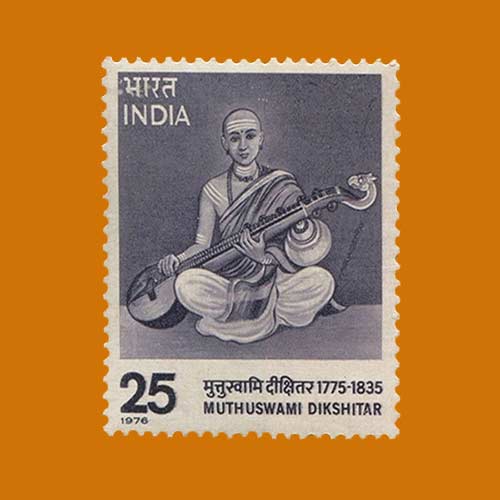Let’s remembering Sri Muthuswami Dikshitar
2018-03-24 Sat
Sri Muthuswami Dikshitar was a South Indian poet and composer and is one of the Musical Trinity of Carnatic music. His compositions, of which around 500 are commonly known, are noted for their contemplative nature and for capturing the essence of the raga forms through the vainika (veena) style that emphasizes gamakas. They are typically at a slower speed (chowka kala). He is also known by his signature name of Guruguha which is also his mudra (can be found in every one of his songs). His compositions are widely sung and played in classical concerts of Carnatic music.Dikshitar was born on March 24, 1775, in Tiruvaruar, in the modern day Tamil Nadu to Ramaswami Dikshitar, an accomplished musician who had created the famous Raga Hamsadwani, and Subbamma.
As was the custom in Brahmin families in those days, Dikshitar learnt Sanskrit and studied important Hindu texts as a child. His father taught him the basics of music.
When he was a teenager, Dikshitar went on a pilgrimage. He visited several places in North India, including the holy city of Banaras. At Varanasi (Banaras), Muthuswami’s guru Chidambaranatha Yogi presented him with a veena.
Dikshitar taught music to four dance masters who were based in Tanjavur. The four — Sivanandam, Ponnayya, Chinnayya and Vadivelu — later became the ‘Tanjore Quartet’, composers of music for Bharatanatyam. Dikshitar was also acquainted with Western music, and some of his songs reflect an influence of the British bands he heard at Fort St. George.
To honour this great musician and versatile genius India post issued a commemorative postage stamp in 1976.
Image Courtesy: Mintage World
Latest News
-
Janma Kalnayak of Bhagwan Mahavir
2024-04-24 WedOn 21st April 2024 which was the 2550th Janma Kalnyanak of Bhagwan Mahavir Swami, PM Modi unveile...
-
Gold Pagoda of Vijaynagar Empire King Deva Raya I
2024-04-10 WedKing Deva Raya I of the Vijayanagara Empire was a patron of Kannada literature and architecture. He ...
-
Silver Denarius of Septimus Severus
2024-04-05 FriLucius Septimius Severus served as the Roman emperor from 193 to 211 AD. Severus sat on the throne o...
-
Extremely rare 'Malaharamari' type Gold Gadyana of King Guhalladeva-III Sold for INR 611000
2024-04-03 WedTribhuvanamalla, also known as Guhalladeva III, was the ruler of the Kadamba dynasty. His reign coin...
-
90 Years of RBI
2024-04-02 TueOn 1st April, PM #Modi unveiled a special commemorative coin marking 90 Years since the foundation o...

